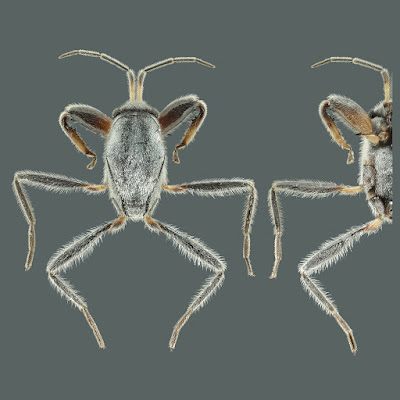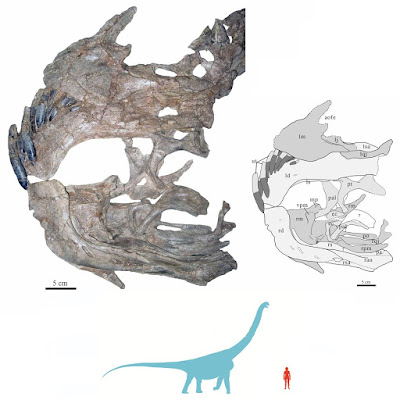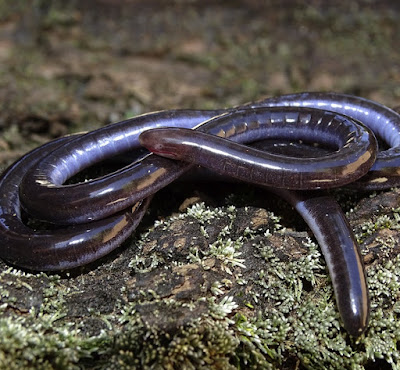[Most Recent Entries] [Calendar View]
Thursday, October 3rd, 2019
| Time | Event | ||||
| 8:34a | [Entomology • 2019] Hermatobates lingyangjiaoensis • First Record of Hermatobatidae (Hemiptera: Heteroptera) from China
Abstract The family Hermatobatidae Poisson, 1965 is recorded for the first time from China and Hermatobates lingyangjiaoensis sp. n. is described. Photographs of the male and female habitus, legs, metasternum, and male genitalic structures, and scanning electron micrographs of the male metasternum and propleuron are provided. A key to all the species currently recognized in the H. weddi species group is presented. Distribution maps for the species of Hermatobates in China and Southeast Asia are also provided. Further, a photograph documenting the feeding of Hermatobates on Halovelia is presented for the first time to serve as direct evidence of the feeding habits of Hermatobates. Keywords: Hemiptera, China, Heteroptera, Hermatobatidae, Hermatobates, new species  Hermatobates lingyangjiaoensis sp. n. Jiuyang Luo, Pingping Chen, Yanhui Wang and Qiang Xie. 2019. First Record of Hermatobatidae from China, with Description of Hermatobates lingyangjiaoensis sp. n. (Hemiptera: Heteroptera). 4679(3); 527–538. DOI: 10.11646/zootaxa.4679.3.7 | ||||
| 10:15a | [Herpetology • 2019] Cnemaspis aaronbaueri • A Cryptic New Species of Cnemaspis Strauch, 1887 (Squamata: Gekkonidae) from the Western Ghats of Kerala State of India
Abstract We describe a cryptic new species of gecko of the genus Cnemaspis Strauch from the southern Western Ghats of Kerala. This medium-sized Cnemaspis species is differentiated from all other Indian congeners by a suite of the following distinct morphological characters: heterogeneous mid-dorsal scales, 6–7 supralabials; 113–120 paravertebral rows of tubercles; 71–85 mid-dorsal scales; absence of spine-like tubercles on flanks; subimbricate, smooth ventral scales; 135–140 mid-ventral scales; subdigital lamellae under fourth digit of manus 23–25; subdigital lamellae under fourth digit of pes 24–25; males with 7–8 precloacal pores; median row of subcaudals enlarged, smooth, a series of two large scales alternating, containing one divided scale; head and neck colouration brownish-yellow, consistent in adult males; adult females with orange coloured head and neck. Recent new descriptions of Cnemaspis species together with the present discovery show that the southern Western Ghats species have been overlooked by previous studies. Therefore we suggest further studies to evaluate the diversity of Cnemaspis in this region. Keywords: Reptilia, Day-gecko, lizard, Cnemaspis ornata, southern Western Ghats Cnemaspis aaronbaueri sp. nov. Etymology. The specific epithet is a patronym, honouring Professor Dr. Aaron M. Bauer of Villanova University, USA for his contributions to herpetology. Amit Sayyed, L. Lee Grismer, Patrick D. Campbell and Raveendran Dileepkumar. 2019. Description of A Cryptic New Species of Cnemaspis Strauch, 1887 (Squamata: Gekkonidae) from the Western Ghats of Kerala State of India. Zootaxa. 4656(3); 501–514. DOI:10.11646/zootaxa.4656.3.7 New gecko found from the Western Ghats punemirror.indiatimes.com/pune/civic/new-g | ||||
| 2:03p | [Paleontology • 2018] Liaoningotitan sinesis • A New Titanosauriformes Dinosaur from Jehol Biota of western Liaoning, China
Abstract A nearly complete sauropod skeleton, collected from the Jehol Biota of western Liaoning, is described briefly as a new titanosauriformes, Liaoningotitan sinesis gen. et sp. nov. Its diagnostic characters include:ventral margin of maxilla is convex, upper tooth row is short and anteriorly positioned; anterior extension of jugal nearly reaches the level of the anterior margin of the antorbital fenestra; quadrate wing of the pterygoid constricted basally; upper teeth are imbricated, narrow spatulate crown is D-shaped in cross section, with labial grooves and denticles absent; well reduced and un-imbricated nine lower teeth; lower tooth crown is asymmetric, elliptical-like in cross section, lingual grooves and ridge present, basal crown bulbous lingually; proximal expansion of the humerus is about 54.9% the length of the humerus, ilium with a pointed preacetabular process. Preliminary result of the phylogenetic analysis shows that Liaoningotitan falls into the clade of titanosauriformes, and is more derived than Euhelopus and Brachiosaurus. Keywords: western Liaoning, Jehol Biota, Early Cretaceous, Yixian Formation, titanosauriformes
Zhou Chang-fu, Wu Wen-hao, Sekiya Toru and Dong Zhi-ming. 2018. A New Titanosauriformes Dinosaur from Jehol Biota of western Liaoning, China.Global Geology. 37(2); 327-333 DOI: 10.3969/j.issn.1004-5589.2018.02.001 【2018新恐龙】白垩纪的东北小巨人——辽宁巨龙(Liaoningotitan) | ||||
| 2:35p | [Herpetology • 2019] Luetkenotyphlus fredi • Phylogenetic Systematics of the Neotropical Caecilian Amphibian Luetkenotyphlus (Gymnophiona: Siphonopidae) including the Description of A New Species from the Vulnerable Brazilian Atlantic Forest
Abstract Luetkenotyphlus brasiliensis has been described 168 years ago, being the only known species of that genus up till date. However, the diversity of caecilian amphibians surprises once again, with the discovery of a new species of Luetkenotyphlus from remnants of the critically threatened Atlantic Forest, in the State of Espírito Santo, Brazil. Herein we describe the new species on the basis of its morphology but also present a molecular phylogeny based on three genes (12S, 16S and COI) including more taxa of Siphonopidae together in a same phylogeny than the previous studies. Our phylogeny did not support the monophyly of Siphonops as currently defined, because Siphonops insulanus was recovered within Luetkenotyphlus, forming a monophyletic group, sister to a clade of three Siphonops spp. We have examined a specimen of S. insulanus from the type locality (Ilha de São Sebastião, São Paulo, Brazil) revealing a shorter premaxillary-maxillary tooth series in comparison to Siphonops. Based on our results, we also allocated S. insulanus to Luetkenotyphlus in order to avoid paraphyly. Keywords: Neotropical region, Molecular phylogeny, Taxonomy, Caecilians, Siphonops
Luetkenotyphlus fredi sp. nov. Etymology. The name of the species is depicted in honor of Dr. Carlos Frederico Duarte Rocha (Fred Rocha), for his important contributions to the knowledge of the herpetofauna worldwide and to its intense efforts for the conservation of the Atlantic forest. Adriano Oliveira Maciel, Thiago M. de Castro, Marcelo José Sturaro, Izadora Emanuelle Costa Silva, Jordana Guimarães Ferreira, Rafael dos Santos, Bárbara Risse-Quaioto, Bruno Alenkine Barboza, Jane C.F. Oliveira, Iracilda Sampaio and Horacio Schneider. 2019. Phylogenetic Systematics of the Neotropical Caecilian Amphibian Luetkenotyphlus (Gymnophiona: Siphonopidae) including the Description of A New Species from the Vulnerable Brazilian Atlantic Forest. Zoologischer Anzeiger. 281; 76-83. DOI: 10.1016/j.jcz.2019.07.001 |
| << Previous Day |
2019/10/03 [Calendar] |
Next Day >> |
















